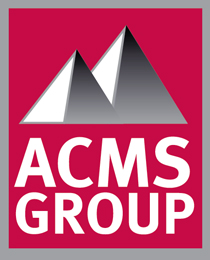 Composite pipes, made from a combination of materials like fiberglass, carbon, and epoxy, offer durability and longevity in various industrial applications. However, like any other material, composite pipes may experience damage over time, whether due to corrosive chemicals, impact, or wear and tear. When these pipes require repair, it’s crucial to perform the task effectively to ensure their continued functionality and safety. In this blog post, we will explore some valuable tips for a successful composite pipe repair.
Composite pipes, made from a combination of materials like fiberglass, carbon, and epoxy, offer durability and longevity in various industrial applications. However, like any other material, composite pipes may experience damage over time, whether due to corrosive chemicals, impact, or wear and tear. When these pipes require repair, it’s crucial to perform the task effectively to ensure their continued functionality and safety. In this blog post, we will explore some valuable tips for a successful composite pipe repair.
1. Proper Inspection and Assessment
Before diving into the repair process, a thorough inspection and assessment of the damaged composite pipe are essential. This inspection should identify the type and extent of damage, whether it’s a crack, hole, delamination, or other issues. Understanding the nature of the damage will guide your repair strategy and materials selection.
2. Safety First
Safety is paramount when working on composite pipe repair, as these pipes often carry hazardous materials or operate under extreme conditions. Ensure that you and your team are equipped with the necessary personal protective equipment (PPE) to prevent exposure to any toxic substances. Additionally, work in well-ventilated areas and adhere to safety guidelines and protocols.
3. Select the Right Repair Materials
Choosing the right repair materials is crucial for a successful composite pipe repair. The selection depends on the type of composite material, the nature of the damage, and the environmental conditions. Common repair materials for composite pipes include epoxy resins, fiberglass cloth, carbon fiber fabrics, and kevlar reinforcements. Ensure that the selected materials are compatible with the pipe material and the repair requirements.
4. Clean and Prepare the Surface
Proper surface preparation is key to achieving a successful repair. Before applying any repair material, clean the damaged area thoroughly. Remove any contaminants, loose fibers, or chemicals that may interfere with the bonding process. Use a solvent recommended by the resin manufacturer for cleaning and ensure that the surface is dry and free from moisture.
5. Use the Correct Repair Technique
There are various techniques for repairing composite pipes, and the choice of the right method depends on the extent and type of damage. Common repair techniques include wet lay-up, vacuum bagging, and resin infusion. It’s essential to be familiar with these methods and to choose the one that suits the specific repair task.
Wet Lay-Up: In this technique, layers of reinforcing fabric are saturated with resin and applied to the damaged area. This method is suitable for smaller repairs and can be done manually.
Vacuum Bagging: Vacuum bagging involves using a vacuum to remove air and consolidate the repair materials. It’s a more controlled process, suitable for larger and more complex repairs.
Resin Infusion: Resin infusion is a more advanced technique that involves drawing resin through the layers of reinforcing fabric using a vacuum. It results in a high-strength repair but requires specialized equipment.
6. Follow Manufacturer Guidelines
Always follow the guidelines and recommendations provided by the manufacturer of the repair materials. They will provide information on mixing ratios, curing times, and application temperatures. Deviating from these recommendations can lead to ineffective repairs and potential safety hazards.
7. Quality Control and Inspection
During and after the repair, implement a robust quality control process. This includes ensuring that the repair materials are applied correctly, that there are no voids, and that the curing process is monitored. After the repair has cured, inspect the area thoroughly to confirm that the repair has been successful.
8. Post-Repair Testing
Depending on the criticality of the composite pipe, consider conducting post-repair testing to verify the effectiveness of the repair. Non-destructive testing methods, such as ultrasonic testing or radiography, can help identify any hidden defects or issues that may not be visible to the naked eye.
9. Preventive Maintenance and Monitoring
After completing the repair, it’s important to implement preventive maintenance and monitoring measures. Regularly inspect the repaired area to ensure it remains in good condition. Address any signs of deterioration or damage promptly to prevent more extensive repairs or failures in the future.
10. Seek Professional Assistance if Necessary
While minor composite pipe repairs can be done by in-house maintenance teams, more complex or critical repairs may require the expertise of construction professionals with experience in composite materials and repair techniques. Don’t hesitate to seek external assistance if you are uncertain about the repair process.
Conclusion
Successfully repairing composite pipes is a combination of proper assessment, safety measures, material selection, and skillful application. By following these tips and adhering to best practices, you can ensure that your composite pipe repair is effective, durable, and safe, ultimately extending the life and performance of these essential components in various industries.
Got Questions? Let Us Help!
Since 1995, ACMS Group has provided unmatched experience and talent in the manufacturing and construction industries. We’ve served steel, refining, power generation, natural gas, chemical, automotive, food processing, and pharmaceutical clients across the United States. Our services include project management, staffing, safety services, capital and site maintenance, engineering work (civil, electrical, mechanical), inspection assessments, HVAC, and much more! ACMS Group has excellent working relationships with trade unions and other industrial contractors. We offer open and transparent communication with our customers at all times to ensure the best customer experience. Bring your tough, complex construction jobs to us! Contact us today to learn more about what we can do for you!
